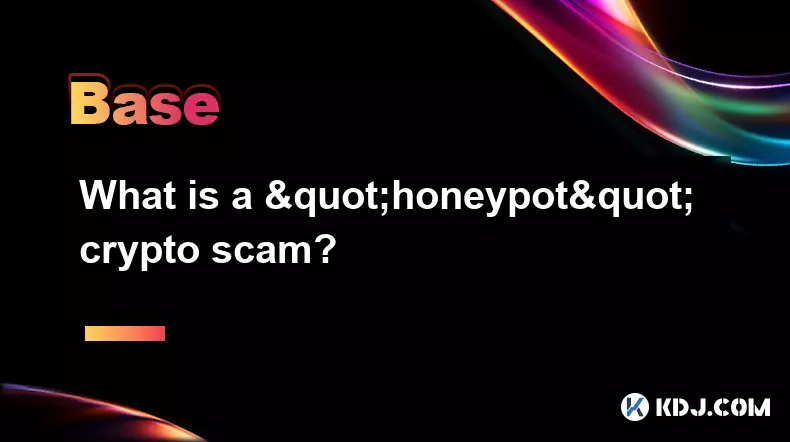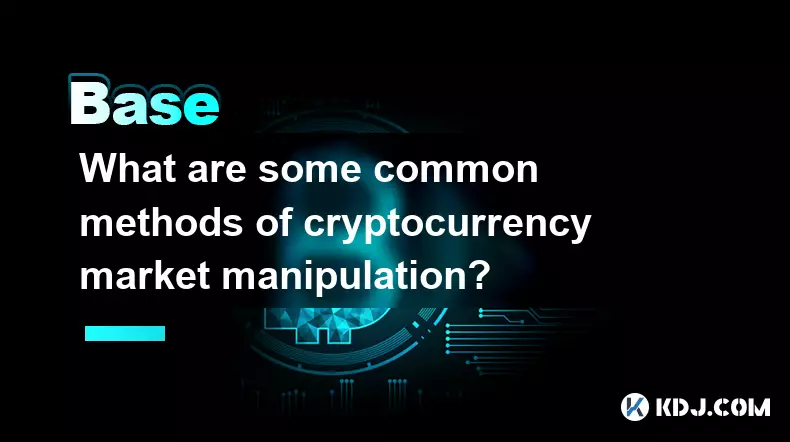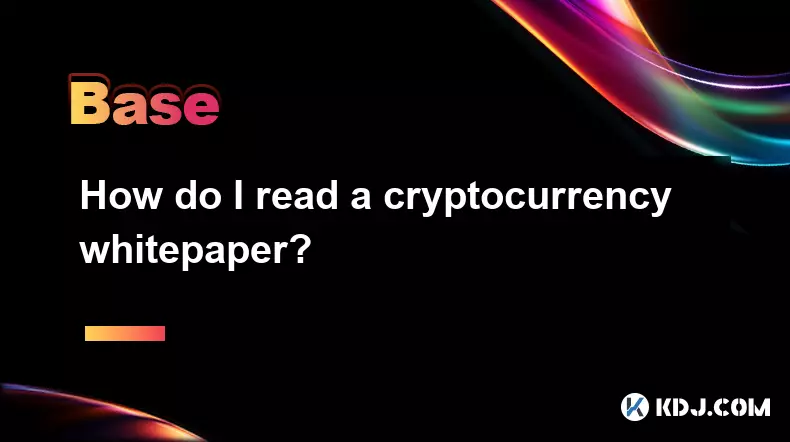-
 bitcoin
bitcoin $122288.232522 USD
0.16% -
 ethereum
ethereum $4480.662914 USD
-0.22% -
 xrp
xrp $2.962747 USD
-2.32% -
 tether
tether $1.000120 USD
-0.05% -
 bnb
bnb $1145.654223 USD
-2.07% -
 solana
solana $227.105217 USD
-1.67% -
 usd-coin
usd-coin $0.999548 USD
-0.02% -
 dogecoin
dogecoin $0.250875 USD
-2.04% -
 tron
tron $0.340654 USD
-0.49% -
 cardano
cardano $0.837968 USD
-2.52% -
 hyperliquid
hyperliquid $48.960449 USD
0.06% -
 chainlink
chainlink $22.049280 USD
-1.33% -
 ethena-usde
ethena-usde $1.000404 USD
0.02% -
 sui
sui $3.586212 USD
0.20% -
 avalanche
avalanche $29.894916 USD
-4.18%
What is a "honeypot" crypto scam?
A honeypot crypto scam tricks investors with fake tokens they can buy but never sell, trapping their funds in rigged smart contracts.
Sep 13, 2025 at 01:36 pm

Understanding the Honeypot Crypto Scam
1. A honeypot in the cryptocurrency space refers to a malicious smart contract designed to lure investors with the promise of high returns. These contracts are often associated with newly launched tokens on decentralized exchanges. The creators advertise the token as a hidden gem, encouraging rapid buying and sharing across social platforms.
2. What makes a honeypot dangerous is that while users can buy the token, they are unable to sell it. The smart contract contains hidden functions that restrict selling, such as blacklisting specific wallet addresses or setting impossible transaction conditions. Investors realize too late that their funds are trapped.
3. These scams thrive in environments with minimal oversight, such as decentralized exchanges like Uniswap or PancakeSwap, where anyone can launch a token without verification. The lack of KYC (Know Your Customer) procedures and audit requirements makes it easy for fraudsters to deploy deceptive contracts.
4. Social media plays a crucial role in amplifying honeypot scams. Fraudsters use bots and fake influencers to generate hype, creating artificial demand. They often post screenshots of fake profits and use urgency tactics like “limited supply” or “whale buying” to pressure users into quick decisions.
5. Once enough victims have purchased the token, the scammers remove liquidity from the trading pair, making the token completely illiquid. This action wipes out any remaining value, and the developers vanish, often taking millions in cryptocurrency with them.
How to Identify a Honeypot Before Investing
1. Always check the token’s smart contract on a blockchain explorer like Etherscan or BscScan. Look for functions such as 'blacklistAddress' or 'setSellTax', which can be used to block sales or inflate transaction fees to impossible levels.
2. Use honeypot detection tools such as Honeypot.is or TokenSniffer. These platforms analyze the contract code and flag suspicious behavior. While not foolproof, they provide an additional layer of security before committing funds.
3. Examine the liquidity pool. If the liquidity is not locked or if the creator retains control over it, this is a major red flag. Legitimate projects typically lock liquidity for months or years using services like Unicrypt or Team Finance.
4. Investigate the team behind the project. Anonymous teams with no verifiable history increase the risk of fraud. Check their social media presence, GitHub repositories, and any available audit reports from reputable firms.
5. Monitor trading activity. A token with high buy volume but zero or minimal sell transactions may indicate a honeypot. Use decentralized exchange analytics to observe real-time trades and wallet movements.
The Role of Decentralized Exchanges in Honeypot Proliferation
1. Decentralized exchanges operate on permissionless listing models, meaning anyone can create and list a token without approval. This openness fosters innovation but also enables malicious actors to exploit the system with little resistance.
2. Unlike centralized exchanges that conduct due diligence, DEXs do not verify the legitimacy of tokens. Users bear full responsibility for their investments, and once a transaction is confirmed on the blockchain, it cannot be reversed.
3. Some DEXs have started integrating warning systems for potentially risky tokens. For example, PancakeSwap displays a “high risk” banner for tokens with suspicious contract features. However, many users ignore these warnings in pursuit of quick profits.
4. The rise of automated market makers (AMMs) has made it easier to create liquidity pools instantly. Scammers exploit this by pairing their fake tokens with popular cryptocurrencies like BNB or ETH, giving the illusion of legitimacy and tradability.
5. Community moderation and user reporting are among the few defenses available on DEX platforms. Users who detect a honeypot can flag the token, but by then, many may have already fallen victim.
Frequently Asked Questions
What happens if I buy a honeypot token?You will be able to purchase the token, but you won’t be able to sell it. The smart contract prevents sell transactions through hidden restrictions. Your funds will remain locked in the token, effectively lost.
Can a honeypot scam be reported and reversed?No. Blockchain transactions are irreversible. Once you send funds to a honeypot contract, there is no way to retrieve them. Law enforcement agencies typically cannot intervene in decentralized financial scams.
Are all new tokens on DEXs honeypots?No. Many legitimate projects launch on decentralized exchanges. However, the risk is significantly higher compared to centralized platforms. Proper research and contract analysis are essential before investing in any new token.
Is there any way to recover funds from a honeypot?There is no reliable method to recover funds. Some third-party services claim to help, but they are often scams themselves. The best approach is prevention through due diligence and using trusted verification tools.
Disclaimer:info@kdj.com
The information provided is not trading advice. kdj.com does not assume any responsibility for any investments made based on the information provided in this article. Cryptocurrencies are highly volatile and it is highly recommended that you invest with caution after thorough research!
If you believe that the content used on this website infringes your copyright, please contact us immediately (info@kdj.com) and we will delete it promptly.
- BlockDAG, DOGE, HYPE Sponsorship: Crypto Trends Shaping 2025
- 2025-10-01 00:25:13
- Deutsche Börse and Circle: A StableCoin Adoption Powerhouse in Europe
- 2025-10-01 00:25:13
- BlockDAG's Presale Buzz: Is It the Crypto to Watch in October 2025?
- 2025-10-01 00:30:13
- Bitcoin, Crypto, and IQ: When Genius Meets Digital Gold?
- 2025-10-01 00:30:13
- Stablecoins, American Innovation, and Wallet Tokens: The Next Frontier
- 2025-10-01 00:35:12
- NBU, Coins, and Crypto in Ukraine: A New Yorker's Take
- 2025-10-01 00:45:14
Related knowledge

How does cryptocurrency achieve decentralization?
Sep 30,2025 at 04:37am
Understanding the Foundation of Decentralization in Cryptocurrency1. Cryptocurrency achieves decentralization primarily through the use of blockchain ...

What are some common methods of cryptocurrency market manipulation?
Sep 27,2025 at 02:55am
Wash Trading and Its Impact on Market Perception1. Wash trading involves an individual or entity simultaneously buying and selling the same cryptocurr...

How do I read a cryptocurrency whitepaper?
Sep 27,2025 at 05:54am
Understanding the Structure of a Cryptocurrency Whitepaper1. Begin by identifying the executive summary, which outlines the project’s core vision and ...

Can I recover lost cryptocurrency?
Sep 25,2025 at 08:18am
Understanding the Nature of Cryptocurrency Loss1. Cryptocurrency operates on decentralized networks, meaning there is no central authority to reverse ...

How do I choose a cryptocurrency investment strategy?
Sep 27,2025 at 03:55pm
Understanding Risk Tolerance in Crypto Investing1. Assessing personal risk tolerance is a foundational step when entering the cryptocurrency market. V...

How can I earn passive income from cryptocurrency?
Sep 23,2025 at 10:18am
Staking Cryptocurrencies for Regular Returns1. Many blockchain networks operate on a proof-of-stake (PoS) consensus mechanism, allowing users to earn ...

How does cryptocurrency achieve decentralization?
Sep 30,2025 at 04:37am
Understanding the Foundation of Decentralization in Cryptocurrency1. Cryptocurrency achieves decentralization primarily through the use of blockchain ...

What are some common methods of cryptocurrency market manipulation?
Sep 27,2025 at 02:55am
Wash Trading and Its Impact on Market Perception1. Wash trading involves an individual or entity simultaneously buying and selling the same cryptocurr...

How do I read a cryptocurrency whitepaper?
Sep 27,2025 at 05:54am
Understanding the Structure of a Cryptocurrency Whitepaper1. Begin by identifying the executive summary, which outlines the project’s core vision and ...

Can I recover lost cryptocurrency?
Sep 25,2025 at 08:18am
Understanding the Nature of Cryptocurrency Loss1. Cryptocurrency operates on decentralized networks, meaning there is no central authority to reverse ...

How do I choose a cryptocurrency investment strategy?
Sep 27,2025 at 03:55pm
Understanding Risk Tolerance in Crypto Investing1. Assessing personal risk tolerance is a foundational step when entering the cryptocurrency market. V...

How can I earn passive income from cryptocurrency?
Sep 23,2025 at 10:18am
Staking Cryptocurrencies for Regular Returns1. Many blockchain networks operate on a proof-of-stake (PoS) consensus mechanism, allowing users to earn ...
See all articles










































































